Hyundai Tucson vs VW Polo – Performance, range & efficiency compared
Both models have their strengths – but which one suits you more?
Compare performance, efficiency, price and space directly: Hyundai Tucson or VW Polo?
Costs and Efficiency:
When it comes to price and running costs, the biggest differences usually appear. This is often where you see which car fits your budget better in the long run.
VW Polo has a significantly advantage in terms of price – it starts at 17000 £, while the Hyundai Tucson costs 30600 £. That’s a price difference of around 13633 £.
Fuel consumption also shows a difference: Hyundai Tucson manages with 1 L and is therefore significantly more efficient than the VW Polo with 5.10 L. The difference is about 4.10 L per 100 km.
Engine and Performance:
Power, torque and acceleration are the classic benchmarks for car enthusiasts – and here, some clear differences start to show.
When it comes to engine power, the Hyundai Tucson has a somewhat edge – offering 252 HP compared to 207 HP. That’s roughly 45 HP more horsepower.
In acceleration from 0 to 100 km/h, the VW Polo is noticeable quicker – completing the sprint in 6.50 s, while the Hyundai Tucson takes 7.90 s. That’s about 1.40 s faster.
In terms of top speed, the VW Polo performs somewhat better – reaching 240 km/h, while the Hyundai Tucson tops out at 204 km/h. The difference is around 36 km/h.
There’s also a difference in torque: Hyundai Tucson pulls to a small extent stronger with 379 Nm compared to 320 Nm. That’s about 59 Nm difference.
Space and Everyday Use:
Cabin size, boot volume and payload all play a role in everyday practicality. Here, comfort and flexibility make the difference.
Both vehicles offer seating for 5 people.
In curb weight, VW Polo is noticeable lighter – 1143 kg compared to 1542 kg. The difference is around 399 kg.
In terms of boot space, the Hyundai Tucson offers convincingly more room – 620 L compared to 351 L. That’s a difference of about 269 L.
In maximum load capacity, the Hyundai Tucson performs evident better – up to 1799 L, which is about 674 L more than the VW Polo.
When it comes to payload, Hyundai Tucson to a small extent takes the win – 545 kg compared to 457 kg. That’s a difference of about 88 kg.
Who comes out on top?
Overall, the Hyundai Tucson shows itself to be dominates this comparison and secures the title of DriveDuel Champion.
It convinces with the more balanced overall package and proves to be the more versatile choice for everyday use.
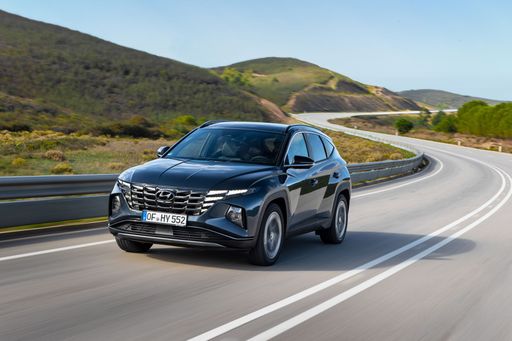 @ Hyundai Motor Company
@ Hyundai Motor Company
Hyundai Tucson
Hyundai Tucson
Hyundai Tucson marries bold, sculpted looks with a clever, roomy cabin that feels smarter than its price tag suggests. It's composed on the road, easy to live with day-to-day, and a sensible choice for buyers who want SUV style without the showroom theatrics.
details @ Hyundai Motor Company
@ Hyundai Motor Company
 @ Hyundai Motor Company
@ Hyundai Motor Company
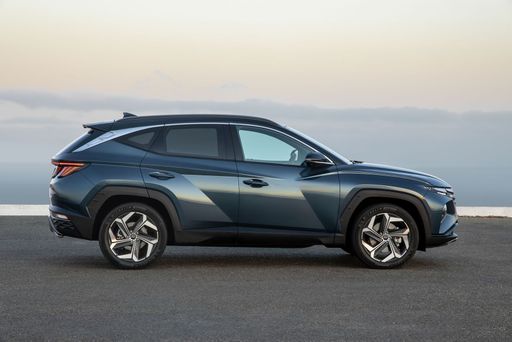 @ Hyundai Motor Company
@ Hyundai Motor Company
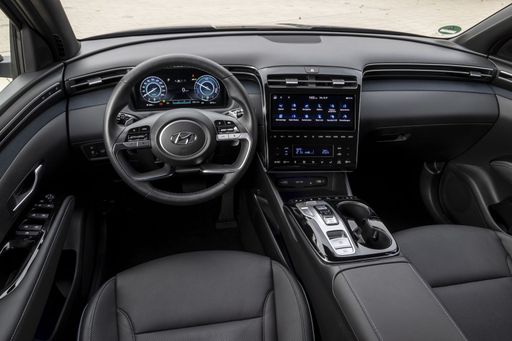 @ Hyundai Motor Company
@ Hyundai Motor Company
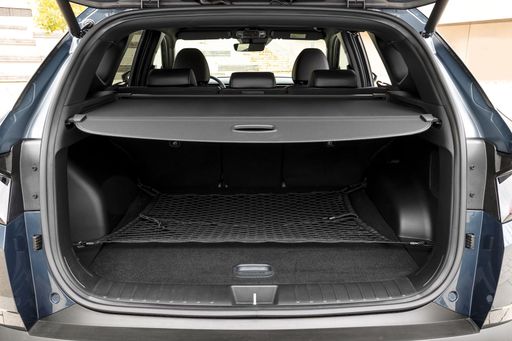 @ Hyundai Motor Company
@ Hyundai Motor Company
VW Polo
The Polo is a small car with surprisingly grown-up refinement, delivering comfortable packaging, crisp handling and a build quality that punches above its class. For buyers who want a practical, fuss-free hatch that still feels a little premium, it’s a sensible, slightly cheeky choice you’ll enjoy every day.
details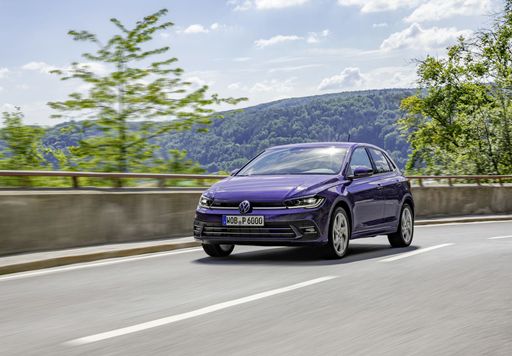 @ Volkswagen AG / VW Media
@ Volkswagen AG / VW Media
 @ Volkswagen AG / VW Media
@ Volkswagen AG / VW Media
 @ Volkswagen AG / VW Media
@ Volkswagen AG / VW Media
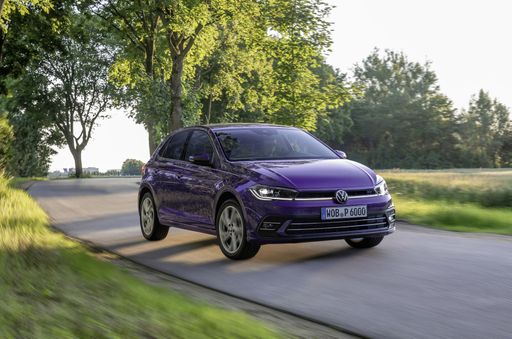 @ Volkswagen AG / VW Media
@ Volkswagen AG / VW Media
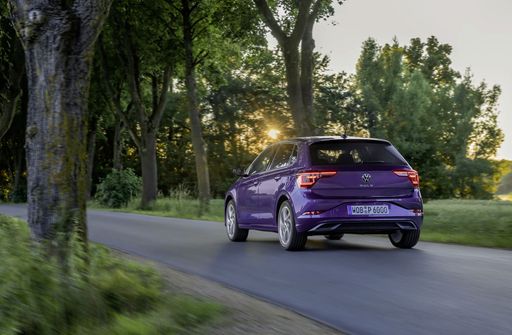 @ Volkswagen AG / VW Media
@ Volkswagen AG / VW Media
 @ Volkswagen AG / VW Media
@ Volkswagen AG / VW Media
 @ Hyundai Motor Company
@ Hyundai Motor Company
|
 @ Volkswagen AG / VW Media
@ Volkswagen AG / VW Media
|
|
|
|
Costs and Consumption |
|
|---|---|
|
Price
30600 - 46300 £
|
Price
17000 - 30400 £
|
|
Consumption L/100km
1 - 7.6 L
|
Consumption L/100km
5.1 - 6.5 L
|
|
Consumption kWh/100km
-
|
Consumption kWh/100km
-
|
|
Electric Range
64 - 70 km
|
Electric Range
-
|
|
Battery Capacity
-
|
Battery Capacity
-
|
|
co2
22 - 172 g/km
|
co2
116 - 148 g/km
|
|
Fuel tank capacity
42 - 54 L
|
Fuel tank capacity
40 L
|
Dimensions and Body |
|
|---|---|
|
Body Type
SUV
|
Body Type
Hatchback
|
|
Seats
5
|
Seats
5
|
|
Doors
5
|
Doors
5
|
|
Curb weight
1542 - 1889 kg
|
Curb weight
1143 - 1378 kg
|
|
Trunk capacity
546 - 620 L
|
Trunk capacity
351 L
|
|
Length
4510 - 4535 mm
|
Length
4074 mm
|
|
Width
1865 mm
|
Width
1751 mm
|
|
Height
1650 mm
|
Height
1431 - 1451 mm
|
|
Max trunk capacity
1721 - 1799 L
|
Max trunk capacity
1125 L
|
|
Payload
523 - 545 kg
|
Payload
432 - 457 kg
|
Engine and Performance |
|
|---|---|
|
Engine Type
Diesel MHEV, Plugin Hybrid, Petrol, Full Hybrid
|
Engine Type
Petrol
|
|
Transmission
Automatic, Manuel
|
Transmission
Manuel, Automatic
|
|
Transmission Detail
Dual-Clutch Automatic, Automatic Gearbox, Manual Gearbox
|
Transmission Detail
Manual Gearbox, Dual-Clutch Automatic
|
|
Drive Type
Front-Wheel Drive, All-Wheel Drive
|
Drive Type
Front-Wheel Drive
|
|
Power HP
136 - 252 HP
|
Power HP
80 - 207 HP
|
|
Acceleration 0-100km/h
7.9 - 11.6 s
|
Acceleration 0-100km/h
6.5 - 15.6 s
|
|
Max Speed
180 - 204 km/h
|
Max Speed
171 - 240 km/h
|
|
Torque
250 - 379 Nm
|
Torque
93 - 320 Nm
|
|
Number of Cylinders
4
|
Number of Cylinders
3 - 4
|
|
Power kW
100 - 185 kW
|
Power kW
59 - 152 kW
|
|
Engine capacity
1598 cm3
|
Engine capacity
999 - 1984 cm3
|
General |
|
|---|---|
|
Model Year
2024 - 2025
|
Model Year
2024 - 2025
|
|
CO2 Efficiency Class
E, B, F, D
|
CO2 Efficiency Class
D, E
|
|
Brand
Hyundai
|
Brand
VW
|
What drive types are available for the Hyundai Tucson?
Available configurations include Front-Wheel Drive or All-Wheel Drive.
The prices and data displayed are estimates based on German list prices and may vary by country. This information is not legally binding.
